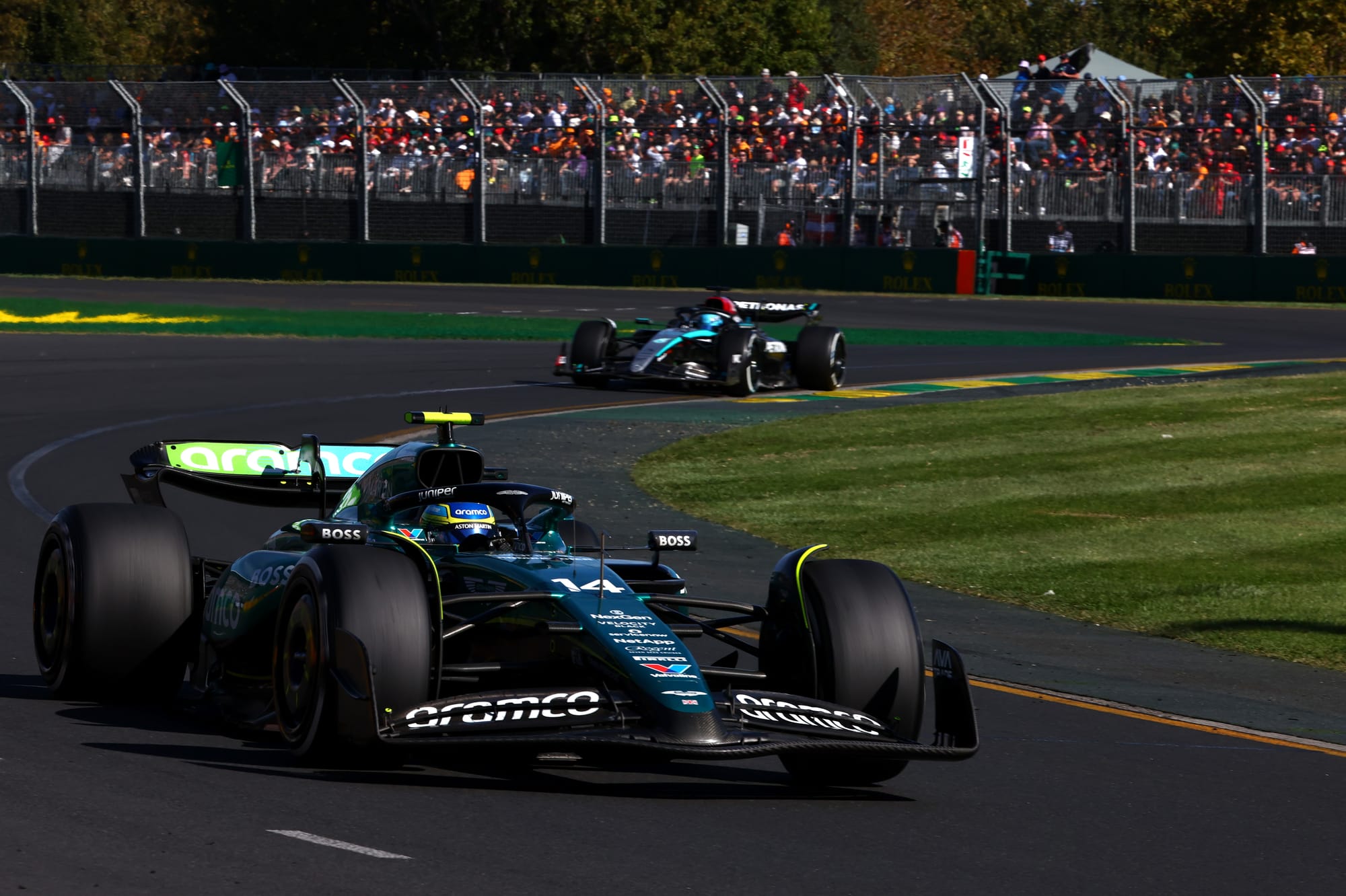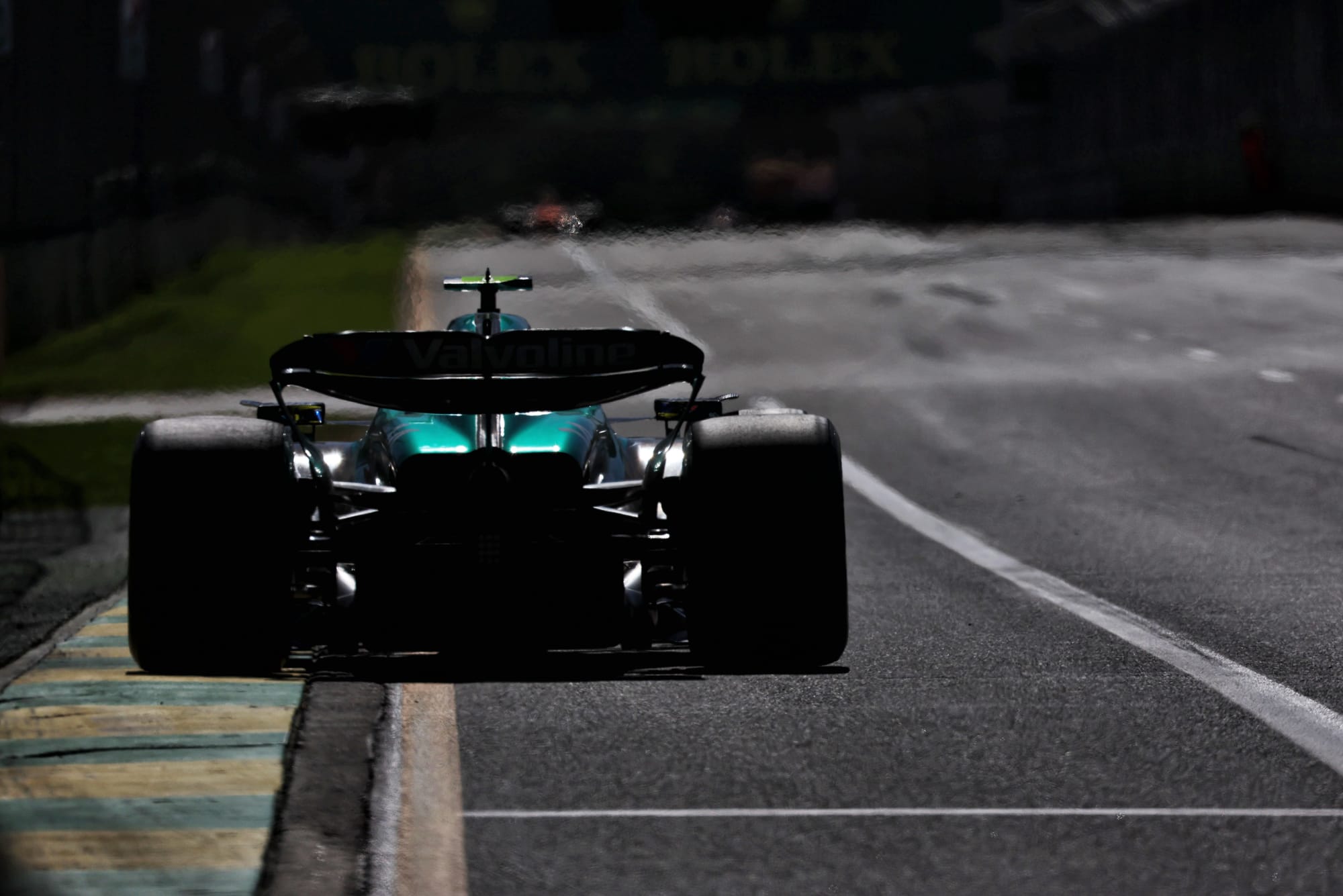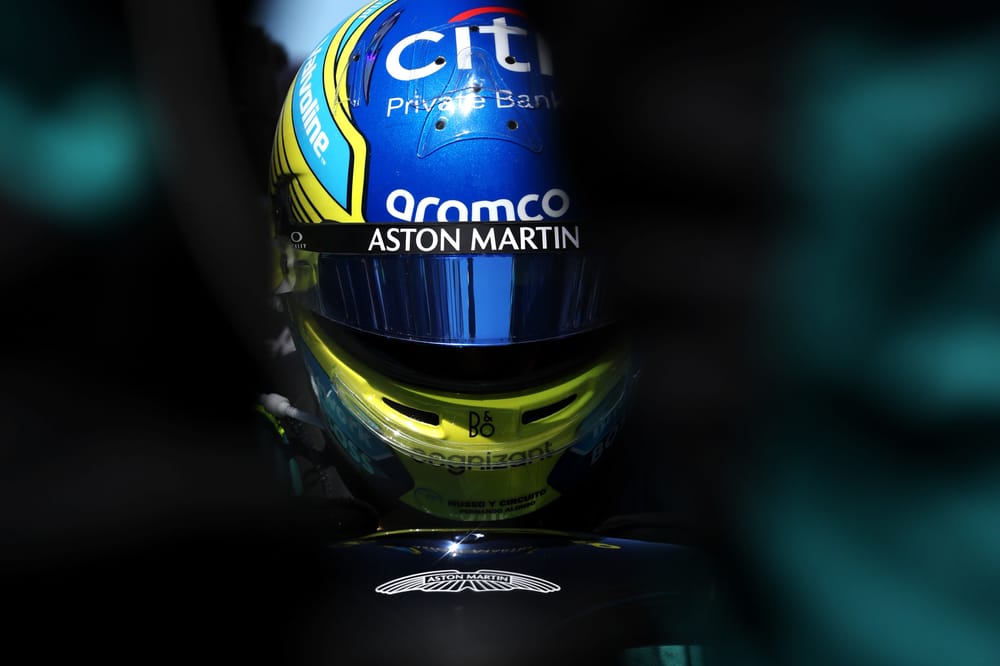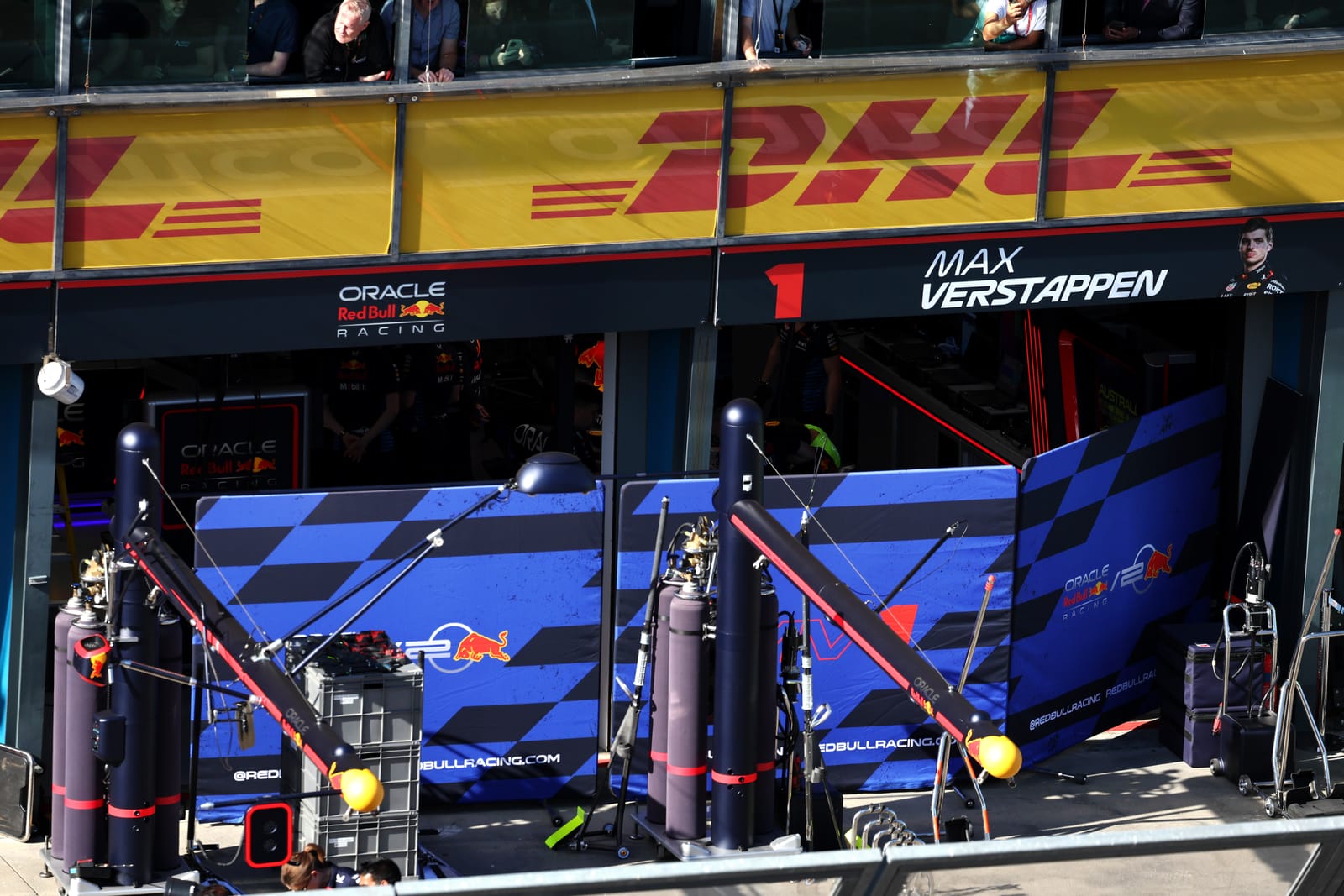Up Next

Fernando Alonso’s public defence of how he drove while protecting position from George Russell on the penultimate lap of Formula 1’s Australian Grand Prix was a typically bombastic piece of self-promotion.
But it only flirted with the full picture of what really happened in the incident that ended with Russell crashing out and Alonso getting a 20-second penalty.
Alonso’s claim that he was trying to get the best exit out of Turn 6 is the one bit of his reasoning that stands up to scrutiny.
He was in a close battle with a faster car, battling against battery problems on his own car, and knew that Russell’s best chance to overtake on the final lap would be with DRS open along the winding flat-out section from Turn 6 to Turn 9.
By deliberately slowing his pace into Turn 6, Alonso would have been hoping to compromise Russell enough to prevent what Alonso no doubt calculated would likely have been a straightforward overtake.
LAP 58/58
— Formula 1 (@F1) March 24, 2024
Big crash for George Russell 💥
The Mercedes driver radioes to say he's okay.
The race will finish behind the Virtual Safety Car #F1 #AusGP pic.twitter.com/SjooKJ8Y5v
But from the perspective of Russell’s Mercedes - even if Russell himself wouldn’t go this far in what he said to the media - Alonso’s driving would have amounted to a brake test.
Russell was following only half a second behind the Aston Martin, and described Alonso’s manoeuvre as ‘erratic’ in the stewards’ hearing, explaining that it took him by surprise and closed the speed between the two cars unusually quickly, which led to the sudden loss of downforce entering the corner that caused him to crash.
Publicly, Russell felt the only potential justification for what Alonso did would have been a genuine technical problem or failure - and although Alonso was struggling with derates from his car’s Energy Recovery System, that doesn’t fully explain the specific move he chose to make in this instance.
Aston Martin indefinitely postponed its regular post-race media session with team principal Mike Krack following the hearing, so all we know of the team’s official position on this incident is that it was “surprised” by the stewards’ decision, as per the post-race press release.
In a different part of the same statement, Alonso described the penalty he received as “disappointing”, claiming that what he did amounted to nothing more than “hard but fair racing”, that it was “what any racing driver would do” and certainly nothing dangerous.
Alonso’s feistier and more detailed defence of his own driving on social media afterwards went further, inferring that F1’s stewards have no right to question his driving, claiming the resultant crash for Russell was the only reason the incident was investigated at all, and drawing comparisons with his “epic” defensive drives of the past - claiming this sort of thing is “part of the art of motorsport”.
Double points for the team and a better race pace than the rest of the weekend allowed us to cross the finish line in 6th and 7th place. A bit surprised by a penalty at the end of the race regarding how we should approach the corners or how we should drive the race cars. At no… pic.twitter.com/WBdr7MPGFr
— Fernando Alonso (@alo_oficial) March 24, 2024
The major problem here is that Alonso’s public defence of what he did omits something crucial that he did admit to the stewards - he, very uncharacteristically for Alonso, made a mistake.
The stewards’ judgement revealed they saw telemetry that indicated Alonso lifted off the throttle more than 100 metres earlier than at any other time during the race approaching Turn 6.
He also braked at a point where he usually didn’t brake and downshifted gears at a point he never usually downshifted.
The stewards said Alonso then upshifted again and accelerated towards the corner, before lifting off the throttle once more to round the turn.
Alonso explained to the stewards that, although he always planned to slow earlier and to a greater degree than usual for this corner, in order to maximise his exit, he “got it slightly wrong” and “had to take extra steps to get back up to speed”.

This is the point that completely undoes Alonso’s defence of his actions - because that act of deliberately slowing down and speeding up again approaching a high-speed corner is something you’d only expect to see during a safety car period or a formation lap, not the final racing lap of a grand prix.
Racing etiquette dictates that ‘checking up’ a rival by going extra slowly through a critical corner or section of a circuit, so as to delay them, is a bit naughty but part of what Alonso calls “the art of motorsport”.
But even if you think Alonso’s intentions were entirely noble here, and he in fact wasn’t trying to unduly influence Russell’s race in the slightest, Alonso at the very least made a significant misjudgment - something more befitting of a rank amateur with no F1 experience than a two-time champion who is widely considered to be one of the very best drivers of his generation.
The stewards were very clear in saying that Alonso had the right to alter his approach to this corner, and couldn’t be held responsible for whatever dirty air negatively affected Russell’s Mercedes.
But they were also very clear that, by his own admission, Alonso chose to do something, with whatever intent, that was “extraordinary”.
“Lifting, braking, downshifting and all the other elements of the manoeuvre over 100m earlier than previously”, is what the judgement said of what Alonso did - and to a much greater extent than was needed to simply slow a bit earlier than usual for the corner.
If Alonso messed about with his lines or his braking points or his throttle inputs to a less severe degree, it might have fallen within the bounds of cheeky or ruthless or hard-but-fair.
He went beyond that. And the stewards felt he crossed a line in doing so.
So Alonso is patently wrong to try to dismiss this incident as trivial and conflate it with some of his great races of the past.

The stewards concluded that what Alonso did in Melbourne was, at the very least, “potentially dangerous” given the high-speed nature of that point of the track.
We’d go so far as to say it unquestionably was dangerous - and that Alonso 100% deserved to be penalised.





